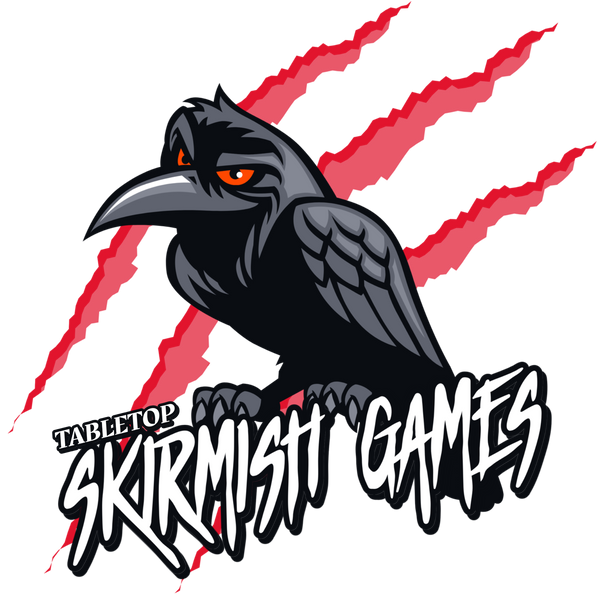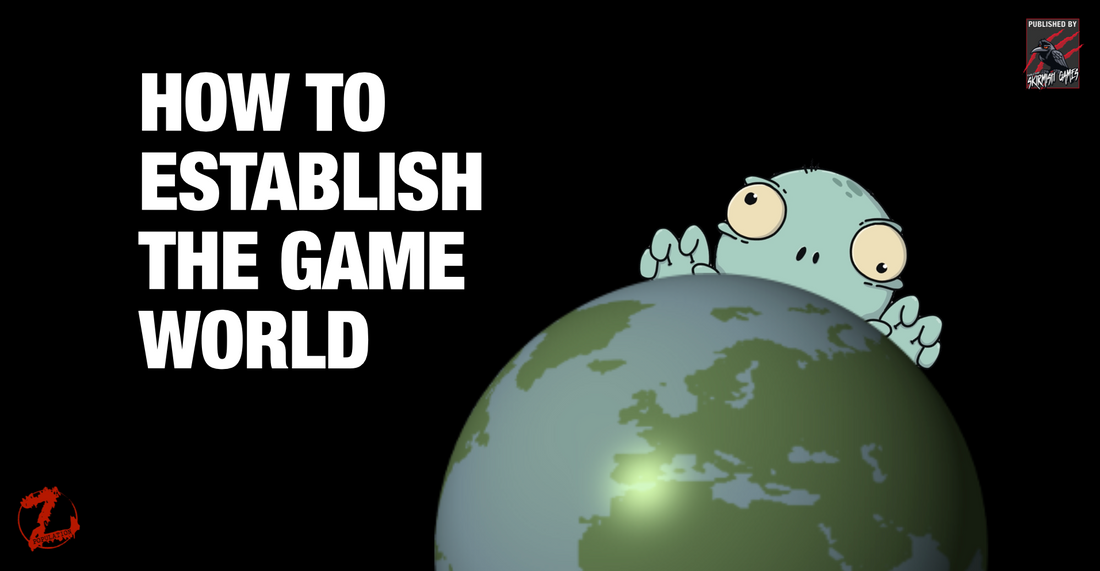How To Establish the Game World in Your Tabletop Skirmish Game
Creating a tabletop skirmish game is a challenging endeavour. There are many elements to consider, from writing the core rules, scenarios and campaigns to photography, artwork, and formatting. As you work towards your deadlines, you’ll solve problems, test your ideas, and make iterative refinements.
One major part of game design is the Game World - a vibrant, immersive backdrop that breathes life into your creation. As a game designer, you become a storyteller weaving tales of strategy, conflict, and adventure around the framework of rules and art that you’ve created.
In this blog post, we'll delve into the significance of establishing a coherent and engaging game world for your skirmish game, exploring elements such as setting, lore, factions, and characters that contribute to world-building. If you're eager to write a tabletop skirmish game but aren't sure where to start, this blog post is for you!
The Significance of a Coherent Game World
Before the first dice is rolled or the initial card is drawn, the game world sets the stage for the entire player experience. A coherent game world provides context for players' actions, instils a sense of purpose, and elevates the gameplay from a mere skirmish to an epic adventure.
Think of the game world as the canvas upon which the narrative unfolds. You’ve laid out the paints and materials in the form of boundaries for the players to act within and rules they will use to interact with your world. You are handing the players a brush and letting them use the materials to paint their pictures. Your world will quickly become their world as they take ownership of the characters, places, and developing narrative.
While rules and mechanics provide the structure of a tabletop game, the game world elevates it to a higher plane. It transforms the experience from a strategic exercise into a storytelling session. The narrative woven into the world becomes a shared experience, creating memories and tales that players carry with them long after the game has finished.
Elements of World-Building
In this section, we’ll explore four essential components that will shape your game world and give players a mix of strategy and storytelling.
Setting:
Start by defining the setting of your skirmish game. Is it a mystical realm filled with arcane energies, a post-apocalyptic wasteland, or perhaps a sci-fi city on the brink of war? The setting not only influences the visual aesthetics but also shapes the rules and dynamics of the game.
For example, in Population Z, the setting heavily influenced the combat mechanics. Zombies don’t always shoot back (not in the conventional sense, at least), so I designed the combat mechanics to reflect that. My goal was to create a zombie TV show on the tabletop, and after watching hours and hours of awesome zombie encounters, I thought up ways to replicate those encounters in a tabletop skirmish game.
The setting dictated the direction of the rules, and even though The Core system I developed transfers to other games (so you don’t have to keep learning the basics), the abilities, combat, scenarios, weapons, items and gear are all designed with the setting in mind.
Lore:
Develop a rich lore that weaves together the history, myths, and legends of your game world. Consider the events that led to the current state of affairs, the rise and fall of civilisations, and the legendary figures that shaped the world's destiny. A compelling lore enhances the depth of the gaming experience.
Lore doesn’t have to go back through the millennia. You can create lore around a village or town and then develop that lore as the game unfolds and you release expansions and supplements. That’s how I’ve approached Population Z. It’s a fictional world that uses our own world as a guide. It begins with a town called Huntsville, and we get to know some of the inhabitants and locations as we play through the campaign. The lore focuses on the town and the initial outbreak, with clues and information coming to the players as they work through scenarios.
Take care not to box yourself into a corner with your lore. It must be detailed enough to be believable but vague enough to allow for developments in different directions. With Population Z, I can create a scenario and base it anywhere in the world at any time, from the outbreak into the future. I can also go back in time and create scenarios that add to character development, like character flashbacks. We don’t have to tell our players everything all at once, and often, the stories won’t exist anyway as we develop them as the game grows.
Factions:
Introduce distinct factions with unique identities, motivations, and play styles. Whether it's noble knights, cunning rogues, or futuristic mechs, each faction contributes to the diversity and strategic depth of the game.
Players should feel a connection to their chosen faction, immersing themselves in its narrative. You can achieve this through a backstory or set of specific rules that influence tactics and gameplay. Warcry does a great job of defining factions through abilities. Each faction has a set of unique (well, mostly unique) abilities that are simple to learn, fun to play and designed with their lore and narrative in mind.
You can achieve faction distinction by simply giving a group perk such as improved speed in the first round to replicate a well-coordinated team of soldiers entering the battlefield or a buff to close combat when soldiers are within a number of inches of their leader to replicate strong leadership. It doesn’t have to be elaborate or complicated, and a simple perk or buff is often enough to give a distinct flavour to a faction.
Characters:
Populate your game world with memorable characters, each with their own stories, goals, and conflicts. These characters could be leaders of factions, legendary heroes, or even enigmatic figures who influence the course of the skirmish. Well-developed characters provide players with personal stakes in the unfolding story, and this goes back to emotions that we touched on in a previous blog post.
Characters are much more than game pieces; they are the architects of alliances, the instigators of conflicts, and the bearers of stories waiting to be told. By crafting characters with distinct personalities, motivations, and backstories, you invite players to immerse themselves in a world where the decisions and actions of these figures ripple through the game.
After playing tabletop skirmish games for a few years, I’ve found I much prefer to play narrative-style games rather than competitive games. I like to invest in my characters and play the characters I want to play because they look cool or are fun. With this in mind, it’s fun to create characters that are flawed. Instead of making all the characters superheroes, make them weak in areas and then watch as those weaknesses influence the gameplay and narrative.
Getting Started
An engaging game world is a gateway to the players' imaginations. By providing a rich backdrop filled with intriguing landscapes, hidden mysteries, and epic tales, you invite players to become active participants in the unfolding narrative. The more vivid and immersive the world, the more invested players become in the game.
If you're starting the journey of writing your tabletop skirmish game, begin by brainstorming key elements of your game world. What is the central theme? What makes your world unique? Why are you drawn to that theme? Are you passionate enough about it to dedicate many months - even years - to the writing process?
When you have a theme, think about where you will start your game. Consider creating a world map, sketching out major factions, and outlining the pivotal events in your lore. In Population Z, I made a town map for a rural town in the central USA. I wanted it to be surrounded by woodlands, and outdoor activities like hunting and hiking would play a big part in the narrative and the rules. I pinpointed key locations like a Golf Course, Hospital, School and popular Lake and thought about different scenarios that could be played out at each location.
Once you have a map, you can start to expand on ideas, find inspiration, and use it as a prompt to create scenarios, characters and much more.
How To Establish the Game World in Your Tabletop Skirmish Game
In conclusion, the game world is the beating heart of your tabletop skirmish game. It's a realm where battles are fought, alliances are forged, and stories are born. By carefully crafting elements such as setting, lore, factions, and characters, you lay the foundation for an immersive gaming experience that lingers in players' minds long after the final skirmish is resolved.
So, let your creativity soar, take inspiration from genres you are passionate about, and work hard on your ideas, and soon, you’ll have a tabletop skirmish game to share with the world!
As we get closer to the release of Population Z in January 2024, I'll create step by step examples and detailed posts and videos on tabletop skirmish game creation. I'll go through the decision making process, highlight play-testing discoveries, and much more.
I’d love to hear your thoughts and opinions on the subject, so join in the conversation in the comments below.
Thanks for reading!
Lee
Look out for my new game, Population Z: Welcome to Huntsville, launching in January 2024.

